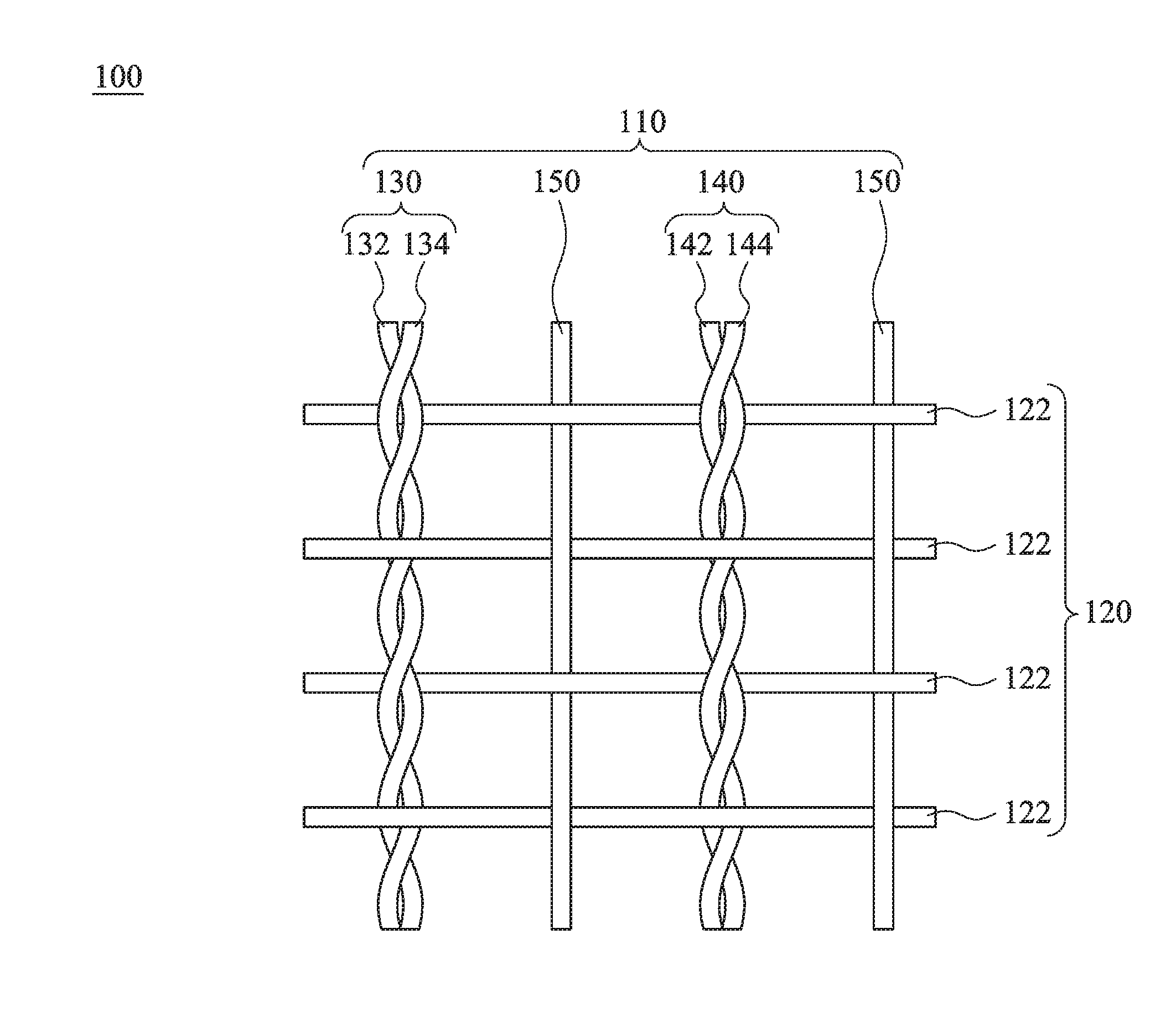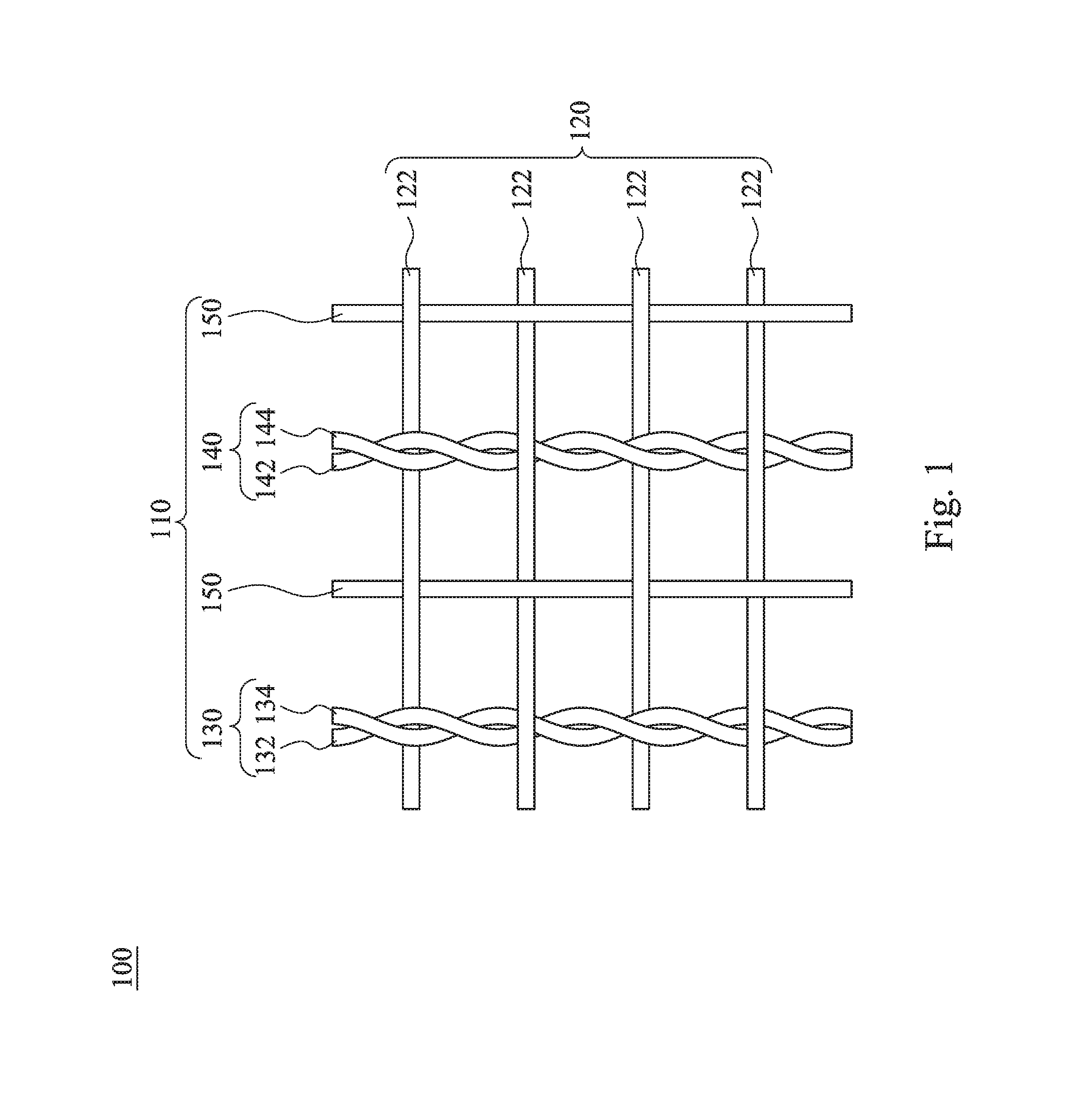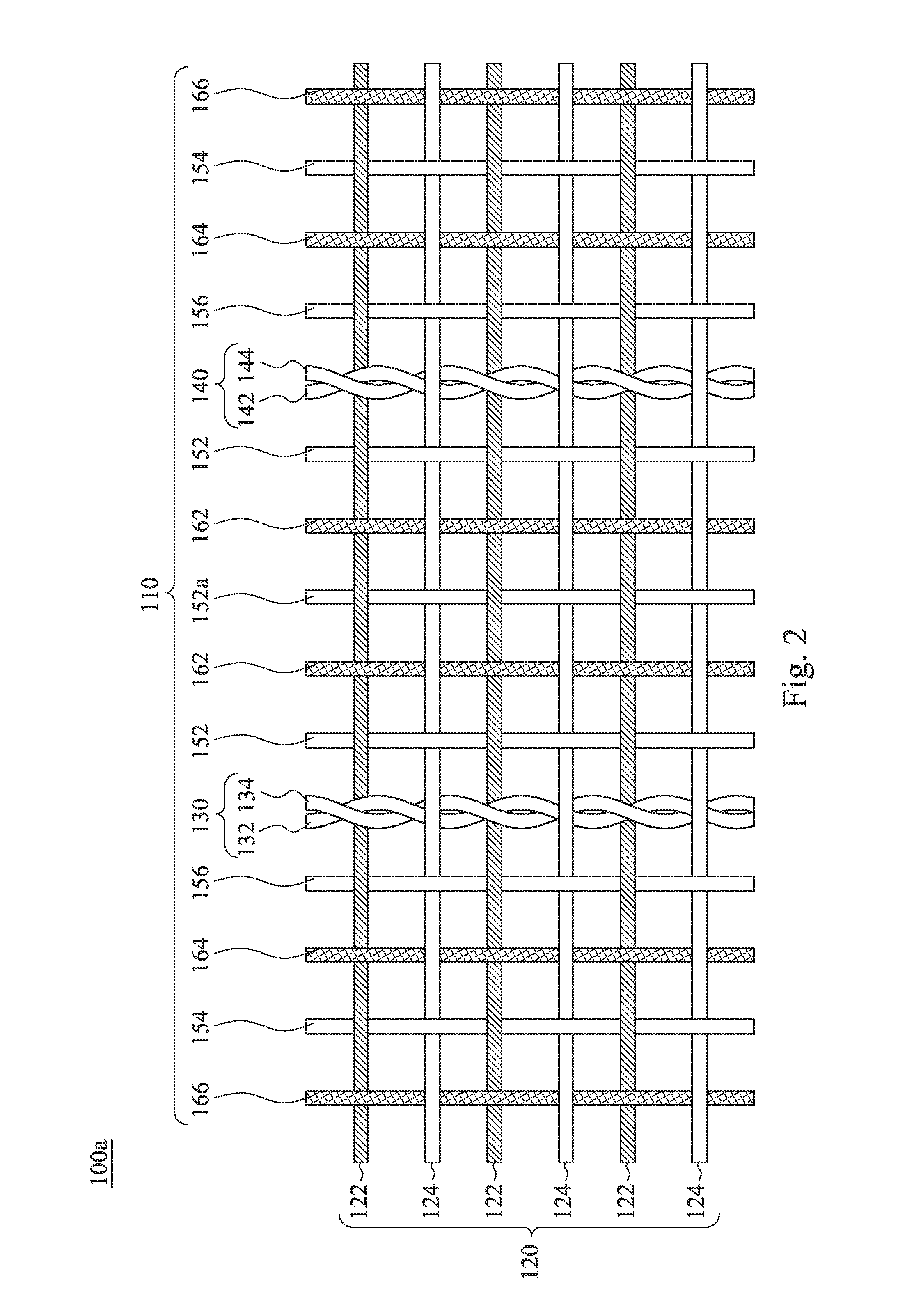Conductive textile
a technology of conductive textiles and textiles, applied in the field of textiles, can solve the problems of difficult to fix the wire traces, user discomfort, improper application of shielding methods to clothes, etc., and achieve the effect of high strength and flexibility
- Summary
- Abstract
- Description
- Claims
- Application Information
AI Technical Summary
Benefits of technology
Problems solved by technology
Method used
Image
Examples
example 1
[0054]Please refer to FIG. 3. FIG. 3 is a schematic view illustrating the conductive textile 200 according to the example 1 of the present disclosure. The conductive textile 200 includes warp 210 and weft 220, and the warp 210 and the weft 220 are interwoven to form the conductive textile 200.
[0055]The warp 210 includes a signal-transmitting unit 230, an electrical connecting unit 240, and a first warp conductive fiber 252, a second warp conductive fiber 254, a first warp insulating fiber 262, a second warp insulating fiber 264 and a third warp insulating fiber 266. The signal-transmitting unit 230 consists of a first signal-transmitting cable 232 and a second signal-transmitting cable 234, which are intertwined. Each of the first signal-transmitting cable 232 and the second signal-transmitting cable 234 includes a central conductive fiber (not shown) and an outer insulating layer (not shown). The electrical connecting unit 240 consists of a first power cable 242 and a second power ...
example 2
[0060]Please refer to FIG. 4. FIG. 4 is a schematic view illustrating the conductive textile 300 according to the example 2 of the present disclosure. The conductive textile 300 includes warp 310 and weft 320, and the warp 310 and the weft 320 are interwoven to form the conductive textile 300.
[0061]The warp 310 includes a signal-transmitting unit 330, an electrical connecting unit 340, and a first warp conductive fiber 352, a second warp conductive fiber 354, a third warp conductive fiber 356, a first warp insulating fiber 362, a second warp insulating fiber 364 and a third warp insulating fiber 366. The signal-transmitting unit 330 consists of a first signal-transmitting cable 332 and a second signal-transmitting cable 334, which are intertwined. Each of the first signal-transmitting cable 332 and the second signal-transmitting cable 334 includes a central conductive fiber (not shown) and an outer insulating layer (not shown). The electrical connecting unit 340 consists of a first ...
example 3
[0063]Please refer to FIG. 5. FIG. 5 is a schematic view illustrating the conductive textile 400 according to the example 3 of the present disclosure. The conductive textile 400 includes warp 410 and weft 420, and the warp 410 and the weft 420 are interwoven to form the conductive textile 400.
[0064]The warp 410 includes a signal-transmitting unit 430, an electrical connecting unit 440 and a first warp conductive fiber 450. The signal-transmitting unit 430 consists of a first signal-transmitting cable 432 and a second signal-transmitting cable 434, which are intertwined. Each of the first signal-transmitting cable 432 and the second signal-transmitting cable 434 includes a central conductive fiber (not shown) and an outer insulating layer (not shown). The electrical connecting unit 440 consists of a first power cable 442 and a second power cable 444, which are intertwined. Each of the first power cable 442 and the second power cable 444 includes a central conductive fiber (not shown)...
PUM
| Property | Measurement | Unit |
|---|---|---|
| length | aaaaa | aaaaa |
| conductive | aaaaa | aaaaa |
| transmission | aaaaa | aaaaa |
Abstract
Description
Claims
Application Information
 Login to View More
Login to View More - R&D
- Intellectual Property
- Life Sciences
- Materials
- Tech Scout
- Unparalleled Data Quality
- Higher Quality Content
- 60% Fewer Hallucinations
Browse by: Latest US Patents, China's latest patents, Technical Efficacy Thesaurus, Application Domain, Technology Topic, Popular Technical Reports.
© 2025 PatSnap. All rights reserved.Legal|Privacy policy|Modern Slavery Act Transparency Statement|Sitemap|About US| Contact US: help@patsnap.com



